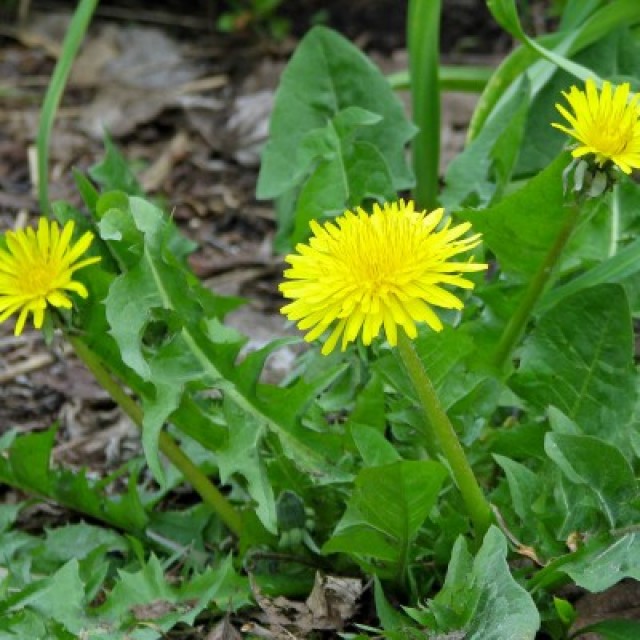COMMON NAME
common dandelion
SCIENTIFIC NAME
Taraxacum officinale
ALSO KNOWN AS
Blowball, Faceclock
Plant family
Aster (Asteraceae)
Plant group
Wildflowers and Herbs
This plant is characterized by bright yellow heads that turn into round balls of silver tufted seeds with no leaves on the flower stem. Common in roadsides and lawns.
1744 reports
868+
OBSERVERS
1744+
OBSERVATIONS
Identification hints
Dandelions are one of the most common and easily identifiable weeds in the country. They have bright yellow heads that turn into round balls of silver tufted seeds, with no leaves on the flower stem. The leaves are distinctive in having a large lobe at the tip, and many sharply pointed outward-facing teeth or lobes along the sides.
Did you know?
The popular name comes from dent de lion, French for "lion's tooth," referring to the distinctive teeth on the leaves. The tender young leaves, rich in vitamins and minerals, make good salad or cooked greens. The mildly laxative and diuretic leaves have been used in medicinal teas, digestive aids, wine, and rustic beers. It originated in Europe and is one of the most widely distributed plants. Dandelion is particularly efficient in producing seeds because it does so without pollination (this also explains why it can make seeds so early in the season).
DISTRIBUTION IN TH U.S.
Alaska
,
Alabama
,
Arkansas
,
Arizona
,
California
,
Colorado
,
Connecticut
,
Delaware
,
Florida
,
Georgia
,
Hawaii
,
Iowa
,
Idaho
,
Illinois
,
Indiana
,
Kansas
,
Kentucky
,
Louisiana
,
Massachusetts
,
Maryland
,
Maine
,
Michigan
,
Minnesota
,
Missouri
,
Mississippi
,
Montana
,
North Carolina
,
North Dakota
,
Nebraska
,
New Hampshire
,
New Jersey
,
New Mexico
,
Nevada
,
New York
,
Ohio
,
Oklahoma
,
Oregon
,
Pennsylvania
,
Rhode Island
,
South Carolina
,
South Dakota
,
Tennessee
,
Texas
,
Utah
,
Virginia
,
Vermont
,
Washington
,
Wisconsin
,
West Virginia
,
Wyoming
HABITAT
Dandelions are very widespread and often considered to be a nuisance, especially by gardeners. They thrive in ‘disturbed’ environments such as lawns, parks, pastures, and other open sunny spaces with nitrogen rich soils.
ATTRIBUTES
Leaves
The leaves grow in a rosette shape from the base of the plant. They are long, lance-shaped to spoon-shaped, with a large round lobe at the tip and typically with triangular backwards pointing lobes or teeth on the sides. Generally, they are 7.5 to 30 in (7.5 to 30 cm) long and 0.4 to 4 in (1 to 10 cm) wide.
Flowers
The composite flowers grow individually on hollow stalks. Each bright yellow flower head is about 1 to 2 in (2.5 to 5 cm) wide and consists of hundred of tiny ray flowers. When broken, the hollow, leafless stems exude a white, milky juice.
Fruits
Overnight, the flower head can change into white, globular seed heads. Each seed has a tiny ‘parachute’ that disperses easily in the wind.
Bloom Time
In more temperate environments, they bloom almost continuously. In colder regions, they start to bloom in early spring and continue to bloom throughout the growing season even into late fall.
See Menu
- 2021 Chicago Botanic Garden. All Rights Reserved.
-
Creative Commons
BY-NC-SA 4.0 - Terms of Use
- Privacy Policy
- Data Sharing and Citation Policies
- 2021 Chicago Botanic Garden. All Rights Reserved.



